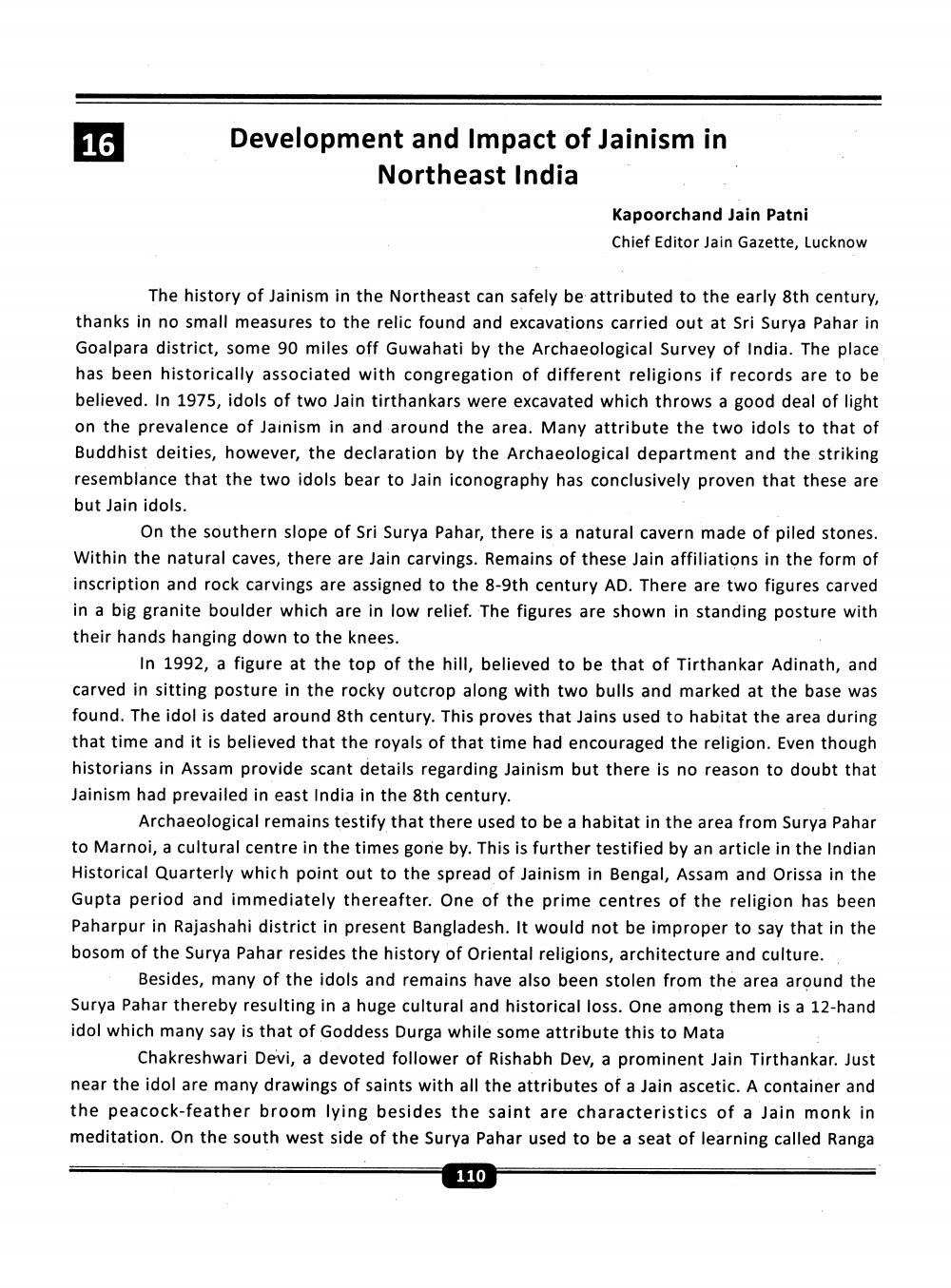________________
16
Development and Impact of Jainism in Northeast India
Kapoorchand Jain Patni Chief Editor Jain Gazette, Lucknow
The history of Jainism in the Northeast can safely be attributed to the early 8th century, thanks in no small measures to the relic found and excavations carried out at Sri Surya Pahar in Goalpara district, some 90 miles off Guwahati by the Archaeological Survey of India. The place has been historically associated with congregation of different religions if records are to be believed. In 1975, idols of two Jain tirthankars were excavated which throws a good deal of light on the prevalence of Jainism in and around the area. Many attribute the two idols to that of Buddhist deities, however, the declaration by the Archaeological department and the striking resemblance that the two idols bear to Jain iconography has conclusively proven that these are but Jain idols.
On the southern slope of Sri Surya Pahar, there is a natural cavern made of piled stones. Within the natural caves, there are Jain carvings. Remains of these Jain affiliations in the form of inscription and rock carvings are assigned to the 8-9th century AD. There are two figures carved in a big granite boulder which are in low relief. The figures are shown in standing posture with their hands hanging down to the knees.
In 1992, a figure at the top of the hill, believed to be that of Tirthankar Adinath, and carved in sitting posture in the rocky outcrop along with two bulls and marked at the base was found. The idol is dated around 8th century. This proves that Jains used to habitat the area during that time and it is believed that the royals of that time had encouraged the religion. Even though historians in Assam provide scant details regarding Jainism but there is no reason to doubt that Jainism had prevailed in east India in the 8th century.
Archaeological remains testify that there used to be a habitat in the area from Surya Pahar to Marnoi, a cultural centre in the times gone by. This is further testified by an article in the Indian Historical Quarterly which point out to the spread of Jainism in Bengal, Assam and Orissa in the Gupta period and immediately thereafter. One of the prime centres of the religion has been Paharpur in Rajashahi district in present Bangladesh. It would not be improper to say that in the bosom of the Surya Pahar resides the history of Oriental religions, architecture and culture.
Besides, many of the idols and remains have also been stolen from the area around the Surya Pahar thereby resulting in a huge cultural and historical loss. One among them is a 12-hand idol which many say is that of Goddess Durga while some attribute this to Mata
Chakreshwari Devi, a devoted follower of Rishabh Dev, a prominent Jain Tirthankar. Just near the idol are many drawings of saints with all the attributes of a Jain ascetic. A container and the peacock-feather broom lying besides the saint are characteristics of a Jain monk in meditation. On the south west side of the Surya Pahar used to be a seat of learning called Ranga
110




